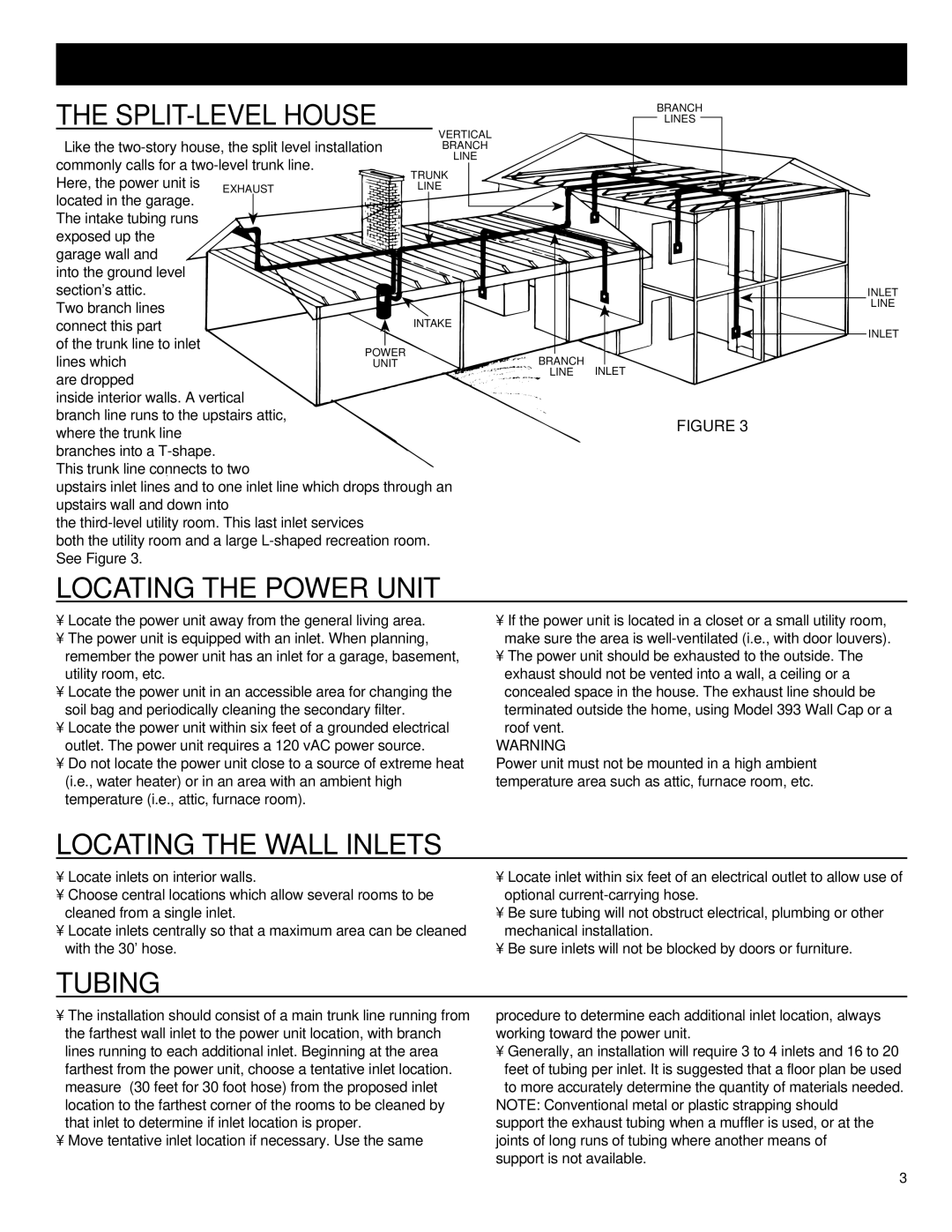CV352 specifications
The NuTone CV352 is a premier central vacuum system designed for homeowners seeking efficiency, power, and convenience in their cleaning routines. This model is part of NuTone's esteemed CV series, which is known for its superior performance and reliability. With a powerful motor and an array of features, the CV352 is well-equipped to elevate your home cleaning experience.One of the standout features of the NuTone CV352 is its robust motor, which delivers an impressive 550 air watts of suction power. This ensures that it can easily handle various types of debris, from fine dust to larger particles. The powerful motor not only improves cleaning efficiency but also reduces the need for frequent emptying, making it suitable for larger homes.
Another noteworthy aspect of the CV352 is its unique filtration system. It comes equipped with a high-efficiency particulate air (HEPA) filter, which captures 99.97% of particles as small as 0.3 microns. This feature is particularly beneficial for allergy sufferers, as it effectively minimizes allergens and improves indoor air quality. The filtration system is designed for easy maintenance, allowing homeowners to replace or clean filters with minimal effort.
The NuTone CV352 also integrates advanced sound-dampening technology, which significantly reduces the operational noise of the system. This feature is a game-changer for households that prioritize a peaceful environment, allowing users to enjoy a quieter cleaning experience without disturbing family members or pets.
Ease of use is another hallmark of the CV352. The central vacuum system comes with a variety of accessories, including a crevice tool, dusting brush, and upholstery nozzle, making it versatile for all cleaning tasks. Its wall-mounted design saves valuable floor space and the convenient on/off switch can be easily accessed from the hose handle, providing a seamless user experience.
Durability is a key characteristic of the NuTone CV352. Built with high-quality materials, it is designed to withstand the rigors of daily cleaning. The system is backed by a generous warranty, reflecting the manufacturer's confidence in its long-lasting performance.
In summary, the NuTone CV352 central vacuum system combines powerful suction, advanced filtration, reduced noise levels, and user-friendly features to create a superior cleaning solution for any home. Its thoughtful design and capabilities make it a worthwhile investment for those looking to enhance their home cleaning process.

